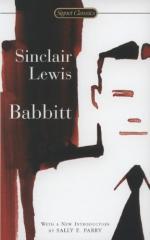|
This section contains 623 words (approx. 2 pages at 400 words per page) |

|
The Roaring Twenties
After World War I, American politics and social life became increasingly conservative. Republican Warren G. Harding defeated Woodrow Wilson in the 1920 presidential election on a very conservative platform claiming to be a "return to normalcy." Cutting government expenditures, vetoing bonuses for World War I veterans, and lowering income taxes for the wealthy, Harding vigorously supported private enterprise and suppressed labor unions. Harding's conservative administration also, in some ways, set the stage for a decade that enjoyed unprecedented prosperity, at least for the middle and upper classes. As was notoriously exposed after his death in 1923, however, his administration was involved in a great deal of corruption and bribery.
The social conservatism of the 1920s was evidenced most notably by the prohibition of alcohol. Supported by claims that alcohol is bad for health and productivity, as well as by religious groups and post-war racist sentiments towards the...
|
This section contains 623 words (approx. 2 pages at 400 words per page) |

|




